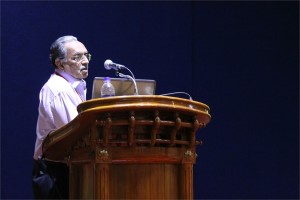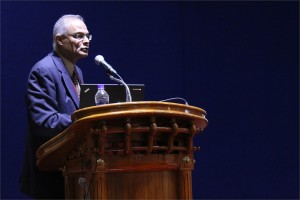The global healthcare scene of which the pharmaceutical industry and its products are integral components is today at the cross roads. The high and unaffordable costs of drug research with estimates of over 1 billion dollars for every new drug discovered and developed, the very low success rates, the high degree of obsolescence due to undesirable adverse drug reactions, the decline in the development pipeline of new drugs, patent expiries leading to generic competition and the public’s disillusionment with use of chemicals for human consumption as drugs have all significantly contributed to the problems of this lifeline industry. The strategy adopted by the large R&D based Corporations to get bigger and bigger through mergers and acquisitions to improve cost-effectiveness and productivity of R&D has so far not worked effectively. Consequently, one of the recent trends in healthcare, articulated by many experts is to look for alternate or even complementary approaches to reduce the impact of rising costs of drugs on healthcare. Various new strategies for drug discovery such as the use of Natural Products especially medicinal plants are being actively pursued by healthcare planners and providers. Side by side, traditional systems of medicine whether from the oriental countries or the western nations are also having a serious relook to understand their usefulness in healthcare. To achieve its legitimate position in the healthcare scenario, it is essential to scientifically validate their claimed utility through appropriate and systematic research efforts including pre-clinical and clinical studies. In addition to their own use as medicines, knowledge on the Indian Traditional Medicines can be used as a platform for new drug discovery. The huge potential for carrying out systematic R&D programs for new Drug Discovery based on natural products and possible strategies to realise them in the coming decades will be explained in this presentation.
 Ramani A. Aiyer, Ph.D., MBA
Ramani A. Aiyer, Ph.D., MBA
Principal, Shasta BioVentures, San Jose, CA, USA
New Drug R&D in India: Challenges & Opportunities
New drug discovery and development has become a global endeavor, with Western big pharmaceutical companies farming out more and more chemistry and biology research to Asia, particularly India and China. During the last decade, several Indian pharmaceutical companies have embarked on ambitious R&D programs, with slow but steady progress in developing new chemical / molecular entities. The Indian government has also made a strong commitment to promote innovation and entrepreneurship in the biotechnology sector. The first part of the talk will focus on a case study showing the entire process of discovery and development of a new drug recently launched for Rheumatoid Arthritis. We will then address the challenges of conducting innovative R&D in India and actions necessary to overcome them. The second part of the talk will make the case for developing Ayurvedic drug formulations for the Western / Global markets, again using the example of Rheumatoid Arthritis (Aamavaata). Ayurveda takes a holistic approach to disease diagnosis and therapy based on interactions among body type (prakriti), tri-doshas (three body humors), sapta-dhatus (seven tissues) and malas (excretions). The drugs prescribed are usually herbo-mineral formulations comprising multiple medicinal plants and / or metals. The manufacturing processes date back to Ayurvedic texts several thousand years old, and are compiled in the Ayurvedic Pharmacopeia. Also, the treatment modalities and drug formulations are “personalized” to fit different patient types, based on the holistic diagnoses mentioned earlier. There is a tremendous need to establish a sound basis for Ayurvedic drug discovery R&D for the modern world. We must find a scientific and ethical way to leverage the vast body of anecdotal and possibly retrospective data on patients undergoing Ayurvedic treatment. Combined with in vitro and in vivo biological data on Ayurvedic herbo-mineral formulations, the adoption of stringent manufacturing practices, and designing sound clinical trials to establish the safety and efficacy, India has a golden opportunity to expand the reach of Ayurvedic drugs into Western / Global medical practice.

Sukhithasri V, Nisha N, Vivek V and Raja Biswas
The host innate immune system acts as the first line of defense against invading pathogens. During an infection, the host innate immune cells recognize unique conserved molecules on the pathogen known as Pathogen Associated Molecular Patterns (PAMPs). This recognition of PAMPs helps the host mount an innate immune response leading to the production of cytokines (Akira et al. 2006). Peptidoglycan, one of the most conserved and essential component of the bacterial cell wall is one such PAMP. Peptidoglycan is known to have potent proinflammatory properties (Gust et al. 2007). Host recognize peptidoglycan using Nucleotide oligomerization domain proteins (NODs). This recognition of peptidoglycan activates the NODs and triggers downstream signaling leading to the nuclear translocation of NF-κB and production of cytokines (McDonald et al. 2005). Pathogenic bacteria modify their peptidoglycan as a strategy to evade innate immune recognition, which helps it to establish infection in the host. These peptidoglycan modifications include O-acetylation and N-glycolylation of muramic acid and N-deacetylation of N-acetylglucosamine (Davis et al. 2011). Modification of mycobacterial peptidoglycan by N-glycolylation prevents the catalytic activity of lysozyme (Raymond et al. 2005). Additionally, mycobacterial peptidoglycan is modified by amidation for unknown reasons.
Here, we have investigated the role of amidated peptidoglycan in Mycobacterium sp in modulating the innate immune response. We isolated amidated peptidoglycan from Mycobacterium sp and non-amidated peptidoglycan from Escherichia coli. We made a comparative analysis of the cytokine response produced on stimulation of innate immune cells by peptidoglycan from E. Coli and Mycobacterium sp. Macrophages and whole blood were treated with peptidoglycan and the cytokines secreted into spent medium and plasma respectively were analyzed using ELISA. Our results show that peptidoglycan from Mycobacterium sp is less effective in stimulating innate immune cells to produce cytokines. This intrinsic modulation of the cytokine response suggests that mycobacteria modify their peptidoglycan by amidation to evade innate immune response.



